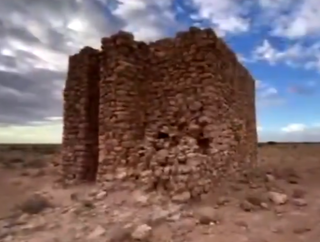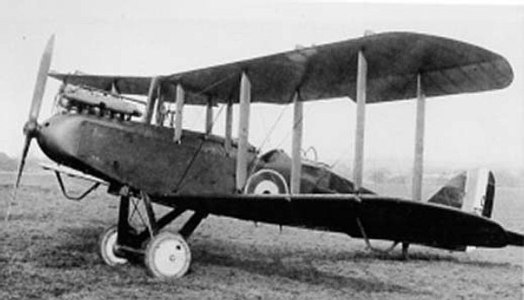The Habar Yoonis alternatively spelled as Habr Yunis is a major clan part of the wider Isaaq clan. As descendants of Ismail bin Sheikh Isaaq, its members form a part of the wider Habar Magaadle confederation which constitutes the largest sub-clan of the Isaaq.
The Dhulbahante is a Somali clan family, part of the Harti clan which itself belongs to the largest Somali clan-family — the Darod. They are the traditional inhabitants of the physiographic Nugaal in its topographic sense, and its pre-independence administrative sense, which included Doollo. The clan's progenitor is buried at Badweyn.

Sayyid Muḥammad ibn 'Abdallāh Hassan was a Somali religious, political, and military leader who founded and headed the Dervish movement, which led a Holy war against British, Italian, and Ethiopian intrusions in the Horn of Africa. He was famously known by the British Empire as the Mad Mullah. In 1917, the Ottoman Empire referred to Hassan as the "Emir of the Somali". Due to his successful completion of the Hajj to Mecca, his complete memorization of the Quran and his purported descent from the Islamic prophet Muhammad, his name is sometimes preluded with honorifics such as Hajji, Hafiz, Emir or Sayyid. His influence led him to being regarded the “Father of Somali nationalism”.

Eyl is an ancient port town in the northeastern Nugal region of Somalia in the autonomous Puntland region, also serving as the capital of the Eyl District. Eyl, also called Illig, was the capital of the Dervish from 1905 onwards, until superseded by Taleh, which became Dervish capital in 1909.

Taleh is a historical town in Sool region of Somalia. The town served as the capital of the pre-independence Dervish movement.
Goryasan, also known as Goriasan was the headquarters of the Dervish movement in 1910, and is contemporarily a ruin and vestige located seven kilometers to the northeast of the town of Taleh. It was the former location of the Xarun in 1910 after it moved from Gaulo, which is also in the Taleh District. There are also other Darawiish heritage sites immediately to the east of Taleh such as Halin, and Dhummay which is halfway between Taleh and Halin, both of which used to have Darawiish fortifications. The year when the Darawiish xarun was settled at Goryasan was known as the Xaaraamacune era.

The Dervish Movement was an armed resistance movement between 1899 and 1920, which was led by the Salihiyya Sufi Muslim poet and militant leader Mohammed Abdullah Hassan, also known as Sayyid Mohamed, who called for independence from the British and Italian colonisers and for the defeat of Ethiopian forces. The Dervish movement aimed to remove the British and Italian influence from the region and restore an "Islamic system of governance with a Sufi doctrine as its foundation", according to Mohamed-Rahis Hasan and Salada Robleh.

Somali nationalism is a nationalist ideology advocating for the unification of all Somali people who share a common ethnicity, language, and culture, under a single banner. Its earliest manifestations has its roots in the Middle Ages with the Adal Sultanate and the Ajuran Sultanate whilst in the contemporary era its often traced back to the “Mad Mullah”, as he was known by the British Empire during the Scramble for Africa. The Somali Youth League, a political organisation founded in 1943 was one of the most influential political parties in Somalia prior to the country’s unification and independence. The Somali guerilla militia Al-Shabab is noteworthy for incorporating Somali nationalism into its Islamist ideology.
Haroun, also called Fadhiweyn, and natively transliterated as Xarunta in Somali, was a government and headquarters of the Dervishes, headed by Faarax Mahmud Sugulle. According to Claude Edward Marjoribanks Dansey, the political officer in the British Somali Coast Protectorate consisted of 400 individuals. The capture of the haroun was regarded as conceivably resulting in the Sayyid's surrender. In the third expedition, major Paul Kenna was tasked "by every means" to find where the haroun is.
Haji Yusuf Barre was the commander at the battle of Jidbali, the largest and deadliest engagement between the dervishes and the British empire in the Horn of Africa. Haji Yusuf Barre is also noted for being the person whom held the last stand at the Dhulbahante garesa at Taleh, in the aftermath of the bombings at Taleh wherein Taleh became the first place to be targeted in Africa through aerial attacks.

Dalyare fort is an open-top Dhulbahante garesa of the Darawiish era which was ordered built by the Dervish as a strategy for countering the colonization efforts of the Europeans. The building is located in the Nugaal Valley a few miles east of Las Anod. The purpose of the Dalyare fort was to serve as a refuge and escape route for Darawiish retreating from colonial forces who intend to head south towards the Shabelle River. However, retrospectively, some analysts have described the building as a setback to the previous tactic of maneuverability on the part of the Darawiish. Cali Jalax was the builder. The native Darawiish referred to the building as Sool-Daryare. On the other hand, the colonialists who launched attacks against the Darawiish referred to the building as Dariali.
Adan Ali Gurey was a political advisor in the Darawiish, an anti-colonial instigator, the commander of Golaweyne, a chieftain of the Dhulbahante, and an arms supplier.

Dhowre Ali Sheneeleh was the castellan of the Darawiish fort / Dhulbahante garesa of Eyl, whilst the governor of Nugaaleed-Bari for the Darawiish was Ali Meggar. He was also the primary commander which spearheaded opposition to Abyssinian expansionism towards the east in the 1900s.
Afbakayle is a 1905 poem by the Sayid Mohammed Abdullah Hassan made while he was in exile. The poem is a political poem which primarily deals with the topic of treachery and two-facedness, known as jeesjeesnimo in Somali. According to scholar Abdulqadir Sheik Abdi, the poem is a direct denunciation of those described as "friendly tribes" by the British, whom he describes as the Sayid's sworn arch-enemies. A repeated mantra in the poem used to describe the Somali colonial collaborators is naga ajoon waayey, meaning won't even flinch.

The Reer Caynaashe also spelled Reer Caynaanshe are a royal Somali clan and were the dynastic rulers of the Habr Yunis Sultanate. They divide into 17 major sub-clans that together form the Baha Ainanshe and Rer Sugulle, from the latter descend the rulers of the Habr Yunis Sultanate. They inhabit the Togdheer and Maroodi Jeex regions of Somaliland and the Daroor, Danot and Misraq Gashamo regions of Ethiopia

Haji Mohamed Bullaleh commonly known as Haji Warabe was an early 20th century Akil (chief) of the Habr Yunis Rer Ainanshe.
Jidali is a town in the Sanaag region of Somalia.

The Mohamoud Garad is a Somali clan. Its members form a part of the Dhulbahante, a sub-division of the Harti/Darod clan-family. The clan is divided into three main sub-clans ― namely the Jama Siad, the Ugaadhyahan and Omar Wa’eys.
The Dhulbahante Garadship begun in the 16th century, as a successor to the Sultanate of Adal with Garad Shishore assuming the royal title in approximately 1530. The current Garad, Garad Jama Garad Ali hails from this long line of succession.

The Battle of Agaarweyne was fought on 15 April 1903, in Agaarweyne between the British under Colonel Plunkett and the forces of Haji Muhammad Abdullah Hassan. Reinforced with a superiority in firearms, Hassan was victorious and defeated the allied force.






















